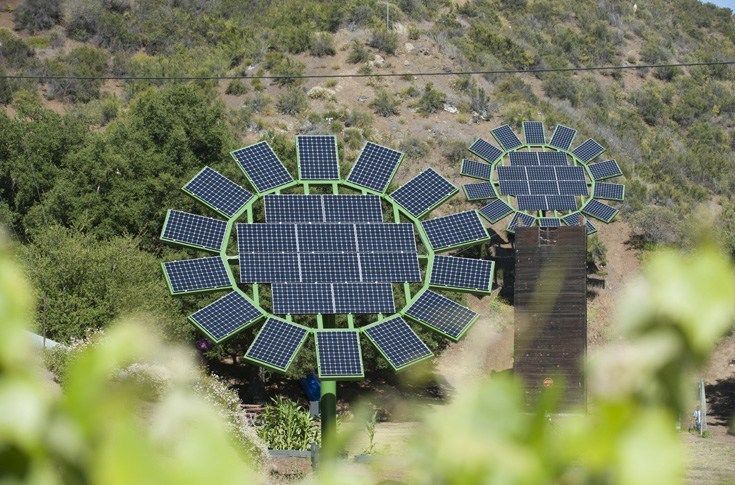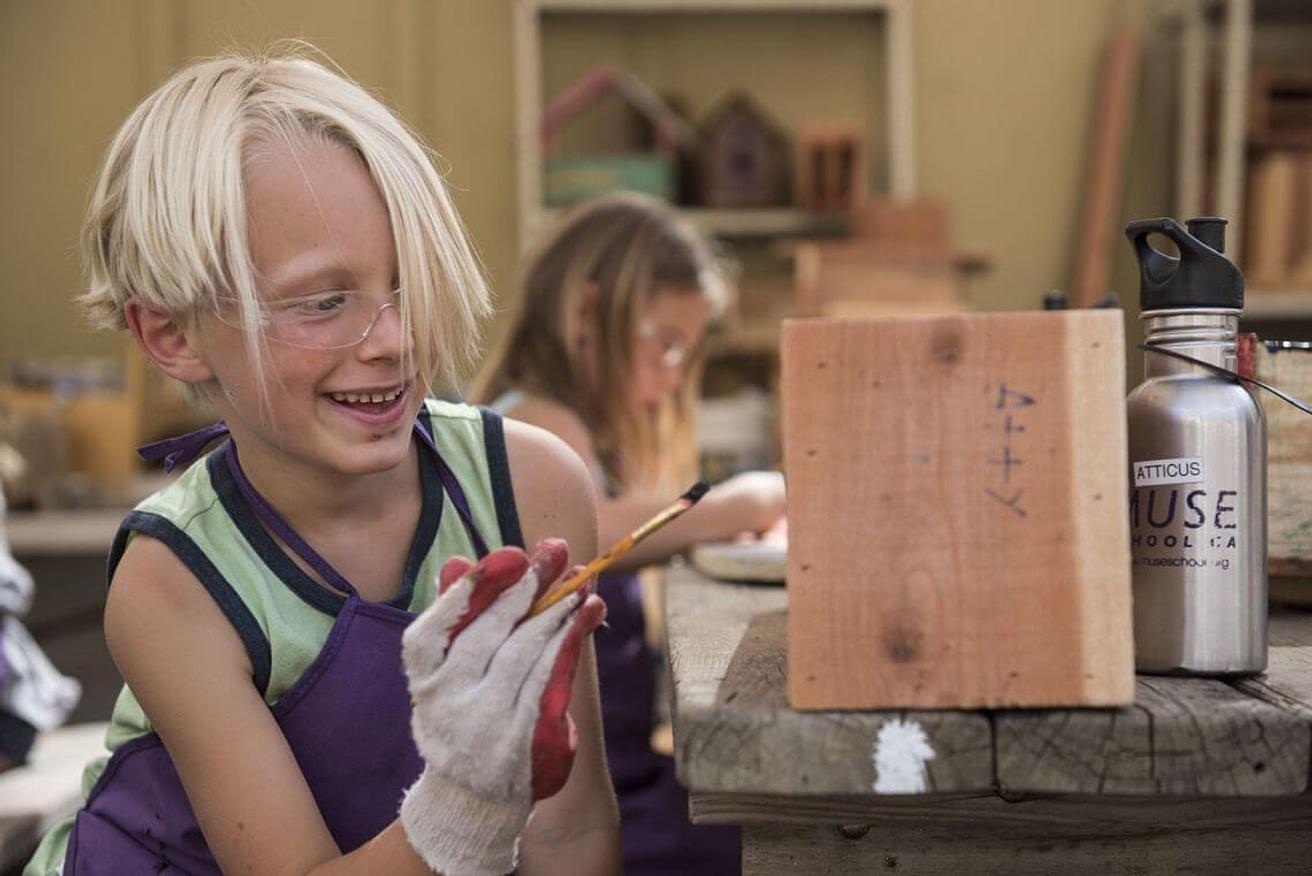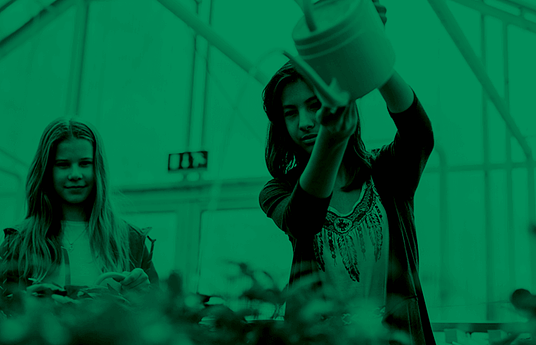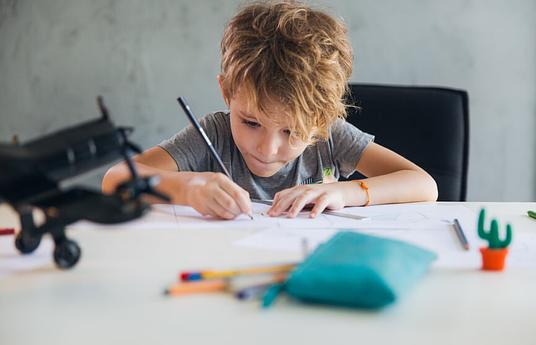Passion, love, sustainability, personal. These words aren’t usually ascribed to education, but at MUSE School in California they’re a part of every school day. We spoke to two MUSE School teachers about what it’s like at one of the most innovative schools in the world and how teachers can adapt similar practices in their classrooms.
At MUSE school each of their core five pillars (academics, communication, passion-based learning, sustainability and self-efficacy) all overlap and collaborate with each other throughout the school. ‘The passion-based approach is so powerful. Allowing students to explore, research and create within their passions is a part of our daily lives (at the school). I love seeing students connect the dots between class projects, MUSE milestones and their passions.’ explains Katelyn Patterson, teacher at MUSE.

Using ballet through math to learn positional words, MUSE connects individual passions with learning.
Including student’s personal passions at school can help to motivate students and for them to see how what they learn at school can connect to their real lives outside of it. Learning almost happens by accident as they lose themselves in a project they’re actually genuinely interested in. At MUSE projects have included launching businesses, contacting Senators with solutions to current problems and collaboratively writing books and organising launches for them!
Katelyn goes on to say, “The kids are incredible and do amazing things because they are in charge of their learning! They come to school with ideas for class projects, lessons they want to teach or people they want to connect with and I help make their dreams come true!”
Passion based learning isn’t just great for the students, as Katelyn suggests, it emboldens teachers too who get to connect with their students in a natural, organic way whilst also becoming learners themselves! Randi Kearney, another teacher at MUSE, told us, ‘I find myself learning new things every day. Students bring in some very specific and unique passions that I might have no previous knowledge about. I love spending a weekend morning at the library researching new topics that I know nothing about. In this sense, teachers and students are learning together!’
Randi and Katelyn recently shared their passion-based approach and the five pillars system at MUSE at the SXSW festival in Austin, Texas. You can listen to their talk below:
The passion-centric approach at MUSE isn’t the only way that Katelyn and Randi have found their teaching practices and experiences improve at the school, the communication model the school employs has helped both their professional work and their personal lives.
‘I feel like I have made many personal developments while working at MUSE. I have significantly grown my self-efficacy! I am more open with new challenges and to try things that may not end well. I also made a huge connection to PCM (process-communication model). The first time I took PCM at MUSE was life altering. It was the first time I felt proud of my personality, character strengths and confident in who I am. PCM also helped me better connect with people who are different from me. PCM is something I will use forever.’
The Process Communication Model is all about figuring out how people like to be communicated with and how they communicate with others. It’s the idea that once we understand this we can connect on a deeper level, which helps in an educational setting particularly with children who don’t respond to traditional teaching scenarios.
‘The Process Communication Model has changed the way I communicate with my husband, my child, and my friends.’ explains Randi, ‘I am now able to understand that they all need to be communicated with in different ways in order to feel loved and accepted. This has been an invaluable tool for me that has reached far beyond my classroom.’
The PCM model is great for students' families too. Randi told us about one of her student’s families who have benefited from the school’s model, ‘I had a mother of one 5 year old student come in and relay that bedtime had been a struggle for years. After asking her daughter every night to get ready for bed, and eventually getting frustrated and using a strong "tell" voice, her daughter looked at her and said, "Mom. You're not using my channel. Try giving me some love and care, and I'll go to bed much easier!" I was so proud of her ability to share her needs and advocate for herself, and her mother was pleased to have found a way to ease the hectic bedtime routine.’

Randi and Katelyn at this year's SXSW festival in Austin, Texas
MUSE school is also a beacon of sustainability. The canteen has become entirely plant-based, where it phased out meat products slowly to transition the children to a planet-friendly diet, they utilize solar energy in order to power the school and the classrooms use reusable materials wherever possible. Katelyn explains, ‘Sustainability is one of our five pillars and is a lens in which we view things. We want everything we do to be as sustainable as possible. From science experiments to basic school supplies, we want to be as eco-friendly as possible. We also want to give our students real information about sustainability so they can be agents for change in their houses, communities and the world.’
‘Through our daily sustainability practices such as composting, eating plant-based, and using reusable materials, students are led to understand that they can make a difference and help our environment.’ adds Randi, ‘This empowers young learners, who otherwise can feel quite powerless when faced with such a daunting challenge. Students are reminded every day how eating one plant-based meal a day is saving hundreds of gallons of water. When they scrape their plates clean into the compost bins, they are reminded that their food can be used to create new soil. All of this just adds another layer to our mission of raising students who feel a part of a global society.’

MUSE uses solar sun flowers to help power the school
Students’ voices are championed whilst being at the school, meaning they don’t have to wait until they leave to be change agents. This even translates to their assessment process in which students have an active (and vocal!) role. ‘In having their voice included in their assessments, students feel ownership over their performance at school.’ explains Randi, ‘In our Blueprints, students reflect on goals they had previously set, discuss their journey through their passion-based learning, and set goals moving forward for the coming semester or school year. Once students reach mid-elementary, they are included in on the parent-teacher conferences. This truly allows students to feel that they have a say in their education. It also adds another level of accountability. Students are defending their own goals and learning standards, rather than ones that someone from above set for them.’
‘The blueprint is very unique in that it assesses students on much more than their academic performance.’ adds Katelyn, ‘We really want to see and assess the whole child. The blueprint is a great tool in allowing students to reflect on themselves as a whole (communication styles, learning preferences, self-efficacy, passions...) they take ownership of their learning. I also adore that students are active participants in writing their blueprints and leading the blueprint conference with their parents and teachers.’
‘I think involving students in the assessment process is crucial. Traditional schools give students tests and grades to which students walk around feeling like a percentage or a number given to them by their teacher. Very rarely do students feel motivated to learn to simply increase their score. Most students usually don’t understand what their numerical grades mean. By allowing students to be involved in every step of assessment, they truly know themselves. They are aware of their natural strengths and their areas of growth. We allow students to self-assess in narrative form, conversations with peers and using rubrics. This puts the power back in the student’s hands. I can’t think of anything more powerful than an eight-year-old reflecting on a project and saying, “Today I wasn’t successful in solving the subtraction problems but I will persist and practice at home so I can solve them tomorrow.”’
MUSE may sound like an inconceivable ideal for teachers in public school systems where they feel like their hands are tied. But it does show hope that this school model can exist and thrive. Taking small elements from the MUSE model can help to enliven a school that doesn’t have as much freedom, as Randi suggests, ‘While what MUSE does is on a large scale, it is very easy to start small. Incorporating half an hour of "passion time" into your day can help students feel engaged and excited to come to school every day. Planting a small garden inside your classroom can yield to a fantastic lesson on sustainability.’ It’s all about doing what you can, where you can, with what you have.
We chose MUSE School to be one of our 100 Inspiring Innovations – particularly for their Blueprints model. You can find out how to make assessment more holistic on their project page. We’ve also partnered with them for our Spotlight on Sustainability. If you have an innovation that tackles this important issue we’d love to hear from you – head to our Spotlight page for more info!
We're also super excited to have both Randi and Katelyn as HundrED Ambassadors. If you want to get involved in changing the face of education worldwide – come and join our growing community!



